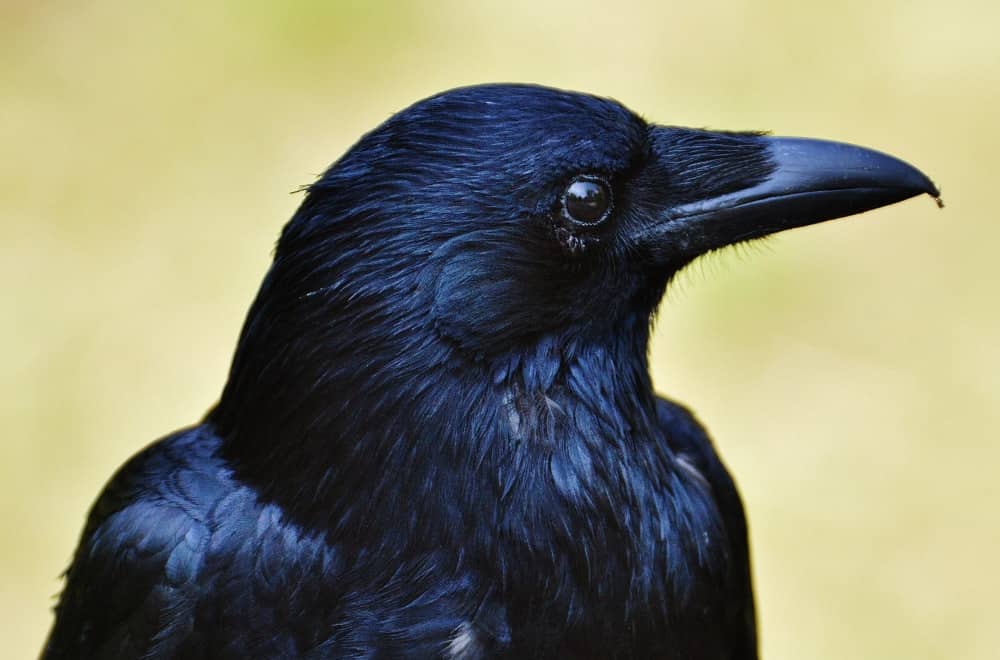Situations and Solutions
Aggression towards pets and humans: Both pets and humans are far beyond the size of crow prey. Aggression is almost always the result of adult crows protecting nearby young and is limited to a very small area. It is a temporary situation that is best resolved by trying to avoid the area they are protecting. While it can be intimidating, crows really do not present a threat to humans, dogs, or cats.
Unwanted crows in the neighborhood: Crows can sometimes be deterred from roosting or foraging in a given area. Loud sudden noises, such as banging pots and pans together just before sunset, can be effective in disrupting a roost location for that evening. Scarecrows can work but only in a small geographic area and if they are built in such a way that they move in the wind and are accompanied by some sort of noisemaker. A raptor-shaped kite placed in the area may frighten crows away. Tightly covering garbage and compost and keeping pet food indoors will help reduce attractants. Crows are nature’s garbage collectors so clean communities will deter large numbers of crows.
Crows raiding other bird nests: Crows will eat small birds and other bird’s eggs. While this may be difficult to watch, it is entirely natural and there is no reason to intervene. Studies show that crows are not affecting songbird populations. Similarly, crows themselves are preyed upon by larger predators such as Red-tailed Hawks and Great Horned Owls. It is all a part of the food chain.
Natural History
Crows are one of our most common urban wildlife residents. These omnivorous birds will eat just about anything, including fruits, vegetables, insects, small rodents, and even other birds and bird eggs. Crows typically build a stick nest in tall trees but also use ledges of manmade structures. Nest building occurs in late April and May. Crow families will establish individual territories during the breeding season, but during the non-breeding season they will gather at huge communal roosts (sleeping areas). Crows are extremely intelligent and family oriented. Funerals held by crows have been documented. They have a wide vocal range including mimicking human voices.
Like many species, juvenile crows will typically leave the nest (fledge) before they are able to fly which usually happens during May, June and July. Fledglings will spend several days on the ground building up their flight capabilities and learning essential survival skills from their families. This is completely normal and a very important part of their life cycle. Unless these birds are clearly injured, they should be left alone for their parents to care for. One easy way to tell that a crow is a youngster is to look at the color of their eyes. Young crows have blue/grey eyes while the adults’ eyes are dark brown/black. Parents and other crows are often found making a raucous noise near the fledglings. This is normal behavior as parents and their previous year’s young are helping to raise the youngsters and drive off potential predators. Sometimes, protective behavior by adult crows can be confused for aggression against the youngsters. Rest assured that a loud group of adult crows is a sign the young are in good hands.


